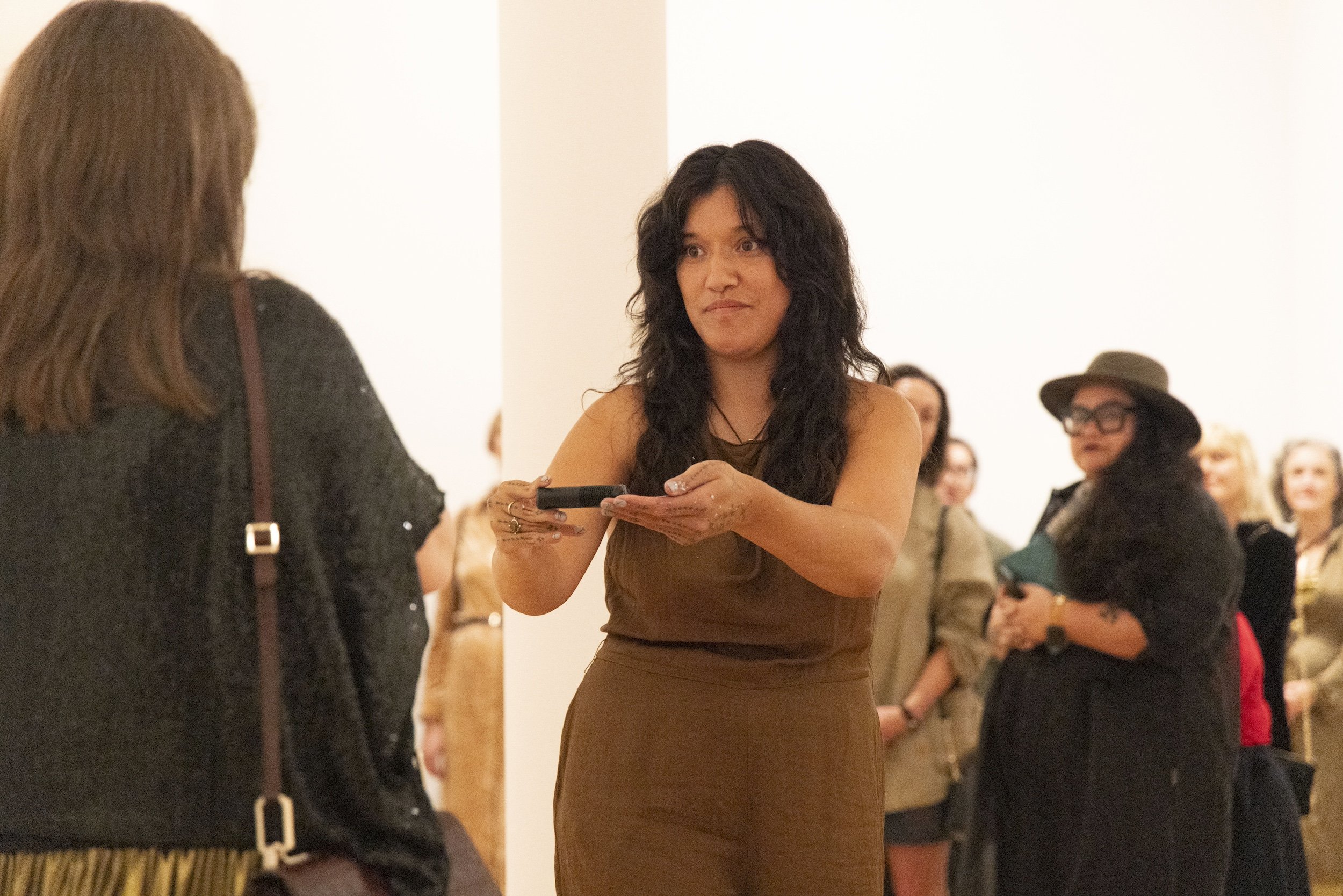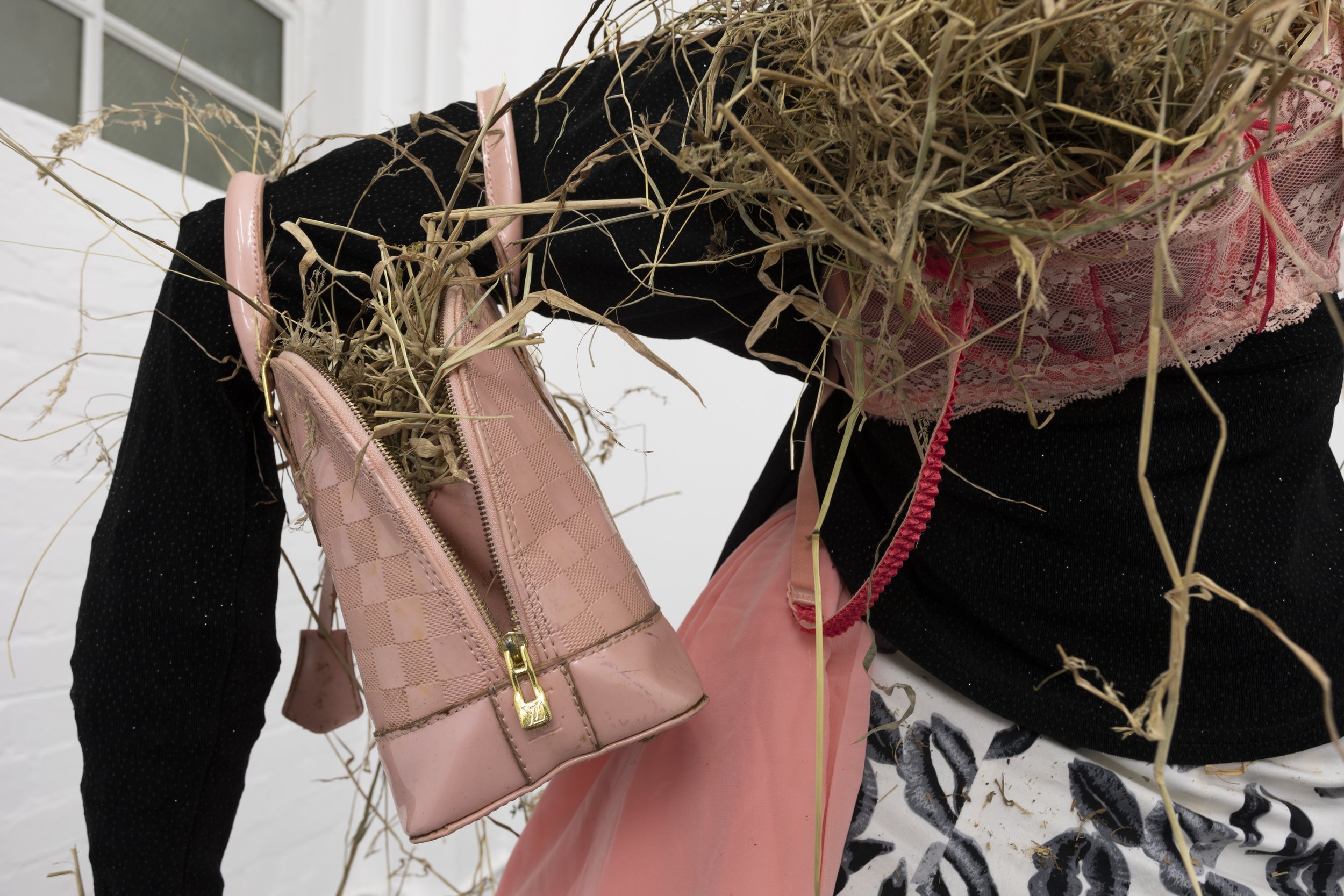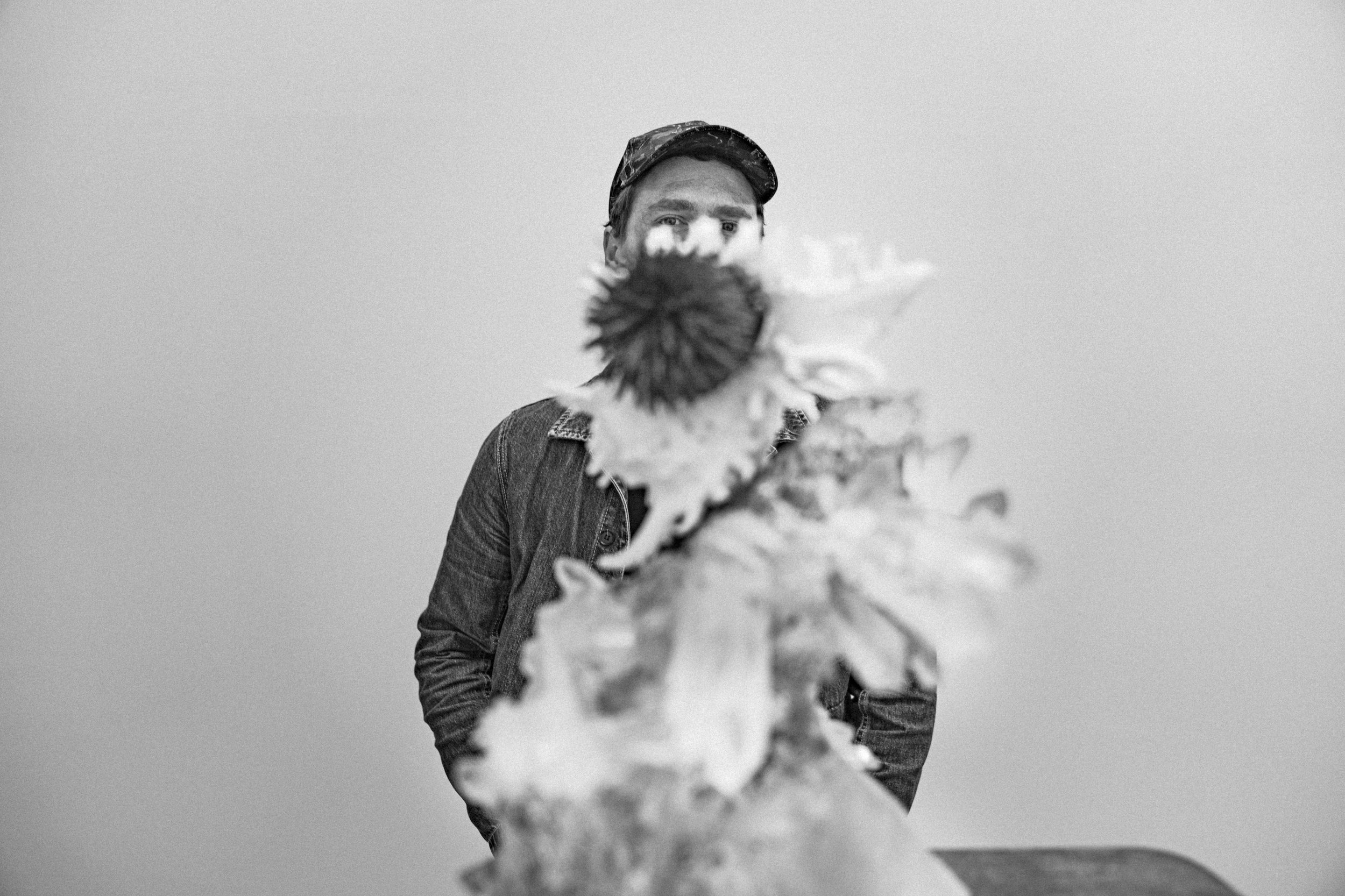Self-mythologising through painting
An interview with Isabella Dampney about her exhibition Britpop, currently on view at play_station artist-run space, 17 October – 9 November 2024.
All photographs courtesy of play_station artist-run space. Photography: Belinda Whitta
Isabella Dampney, Say hello to my little friends, oil on canvas, 90 x 120 cm, 2024
What is Britpop?
With the Oasis reunion coinciding with my 30th birthday, I’m very aware that I’m now at the age where things that were popular when I was a kid are circling back around in a big way for the very first time. My paintings depict personal experiences, sometimes obscurely, and Britpop’s optimism, cheekiness, and brightly coloured street style felt like a good match for the paintings based on ‘90s memories I’d started working on.
Isabella Dampney, John, John, get in the doorway, oil on canvas, 120 x 90 cm, 2024
In the past you’ve told stories with painted words and icons, contextualising these allusive images through prosaic titling. In Britpop, however, you’re instead painting full scenes. Why this shift?
I wanted to make seductive images, and when I think of seductive painting my mind goes to religious painting. I use the phrase “Blakean” in my artist statement. There’s a lot of spiritual iconography within this exhibition, from the near stigmata of Jonty & Aidan sitting in the trees to the halo around the girl in Butterfly House, Melbourne Zoo. The goat in My neighbour loves his kid is also formed as a halo, anointing him with a saintly aura.
The titles of these paintings are less descriptive than in past shows.
I like my titles to be a bit playful, using double entendre—My neighbour loves his kid—and intertextuality. Names in this show include quotes from The Simpsons (“Stupid babies need the most attention.”), Scarface (“Say hello to my little friend!”) and Te Papa’s Earthquake House (“John, John, get in the doorway!”).
They’re funny phrases, but they also tie the artworks to times in my life when those sentences got lodged in my brain. Creating some form of relationship between myself, Tony Montana and Pitbull—three Miami hotshots?—is also a nice way to poke fun at the self-mythologising inherent in using painting as an autobiographical medium.
Isabella Dampney, Future Mrs Worldwide (detail), oil on canvas, 55 × 50 cm, 2024
All but two of the artworks in Britpop feature some form of animal, including spiders and butterflies, pigs and goats, and the rapper Pitbull. Why the fascination?
I just read Rachel Cusk’s new novel Parade, and was taken with her description of animals as “bodies whose actions and motivations we don’t understand. We experience them, in other words, as madness.” She puts into words something I’ve long felt to be true, that animals are a day-to-day experience with madness and the unknown. My dog comes to my studio with me nearly every day. He and I relate to each other through vibe, energy, tone, and—most importantly—presence. He just exists. When people meet my dog, they often try to get him to do tricks. They ask, “What can he do?”, and I reply, “He’s a dog. Being a dog is what he does.”
Isabella Dampney, Butterfly House, Melbourne Zoo, oil on canvas, 90 x 120 cm, 2024
Butterfly House, Melbourne Zoo describes an experience as a child when I was wearing a bright yellow raincoat in Melbourne Zoo’s Butterfly House, and the butterflies began to rest on me. My brother missed out because his jacket was blue. My neighbour loves his kid responds to a (still unexplained) experience I had when I lived in Toronto. During the early days of lockdown, my roommate and I heard a bleating coming from our neighbour Leo’s shed. We had noticed Leo spending increasing time in and around the lean-to, where he had also been rearing pigeons, and we began to suspect he was now keeping a pet goat. Leo was a middle-aged Portuguese man who lived alone with his devout catholic elderly parents—his sister lived across the road. Leo didn’t like our landlord. When we first moved in, he installed an anti-loitering device shooting a shrill hum into our garden. Leo also tossed an obese dead raccoon into our yard, shifted a rooftop’s worth of snow to block our front door, and would mischievously call the fire department to our house. Though it was cruel to keep a baby goat in a small shed, I believe Leo really loved his goat. After a few days of bleating, I jumped the fence at night to peer through the shed’s window, only to see that it had been packed with sound insulation.
Isabella Dampney, My neighbour loves his kid, oil on canvas, 100 × 75 cm, 2024
In the images starring “Isabella Dampney”, you’re being affected by natural forces beyond your command (an earthquake, a butterfly). Do you feel like you had agency as a child? Do you feel like you do now?
When I think back to being a child, I remember being driven around Wellington as my mother ran errands, without any real gauge of where we were or what she was doing. Obviously children are resistant to some things—the dentist, homework, yuck food—but for the most part I just remember standing around while my parents did stuff. As a grown up, I try to listen to my intuition. Things tend to work out for the best when I do. I suppose this is a form of agency that manifests in my paintings.
If these paintings tell one story, what is that story?
I think these are all paintings about doing what you want to do, being left to your own devices. And that’s not always me being left to my own devices. In Stupid babies need the most attention, the man is doing what he wants to do. In My neighbour loves his kid, Leo is doing what he wants to do. I suppose, because of that, it’s also about the complicated experience of leaving behind the family unit you were born into to create your own, new family. Each painting is also, in its own way, an expression of love between different characters. The pigs are a family. Leo is creating his own unit because he knows his parents will soon die.
Isabella Dampney, Stupid babies need the most attention, oil on linen, 30 x 35 cm, 2024
Isabella Dampney, Jonty & Aidan sitting in the trees, oil on canvas, 100 × 75 cm, 2024
















